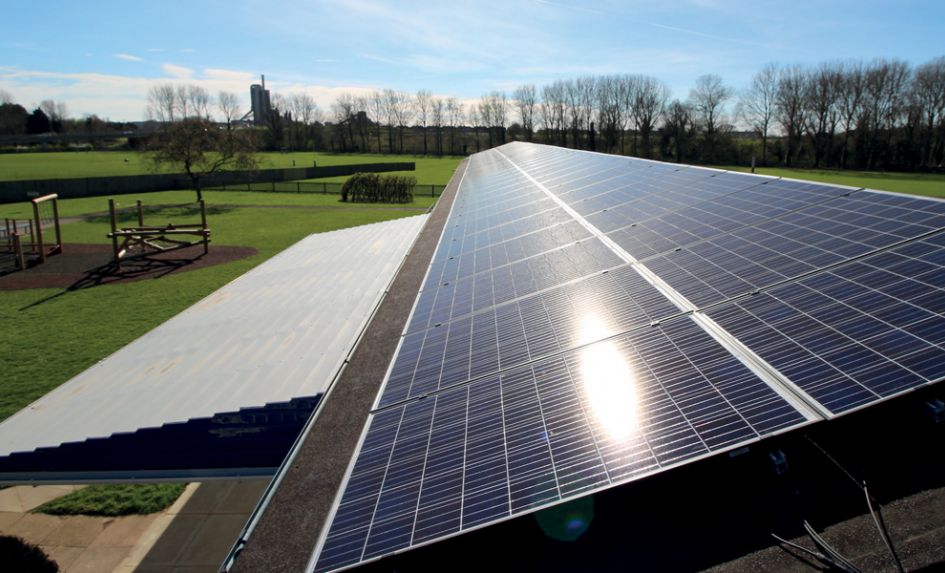Dave Horton
Award-winning energy specialist at npower Business solutions
Finding ways to change employee behaviour has been identified by the government as vital if UK schools and businesses are to realise more widespread efficiencies. Indeed, research by the Centre for Economics and Business Research has found that behavioural change has the potential to deliver savings of around £860m for organisations throughout the UK.
We find most schools can save up to 20% on energy costs by adopting efficiency measures, with employee engagement playing a key part. But the challenge is often how to do this – and where to begin.
Developing a strategy to get staff on board is essential if you want to maximise energy savings. Here are some pointers we’ve found helpful with other schools and businesses we work with.
1. Encourage participation
Put energy efficiency on the agenda by organising an informal meeting and invite staff to share any observations and ideas.
2. Appoint an energy champion
Ask for a volunteer to act as an Energy Champion, whose role will be to engage regularly with staff and feed back ideas. If you need help with this, we offer a one-day specialist Energy Champion training course through our Energy Management Qualifications (www. nbsemq.com). There’s also a 30-minute Foundation e-learning course for other staff to increase their awareness and understanding of how to save energy.
3. Communicate your policy
Work with your Energy Champion to come up with some behaviours you’d like staff to adopt and then communicate these through various means – via posters around school or regular email reminders, for example. Some potential messages might include:
- Turn off equipment after use
- Switch off lights and heating at the end of the day
- Turn down the thermostat, rather than opening windows, if it gets too hot
4. Employ some technological assistance
Where possible, support your goals with technology. For instance, it’s worth putting up reminders to switch off lights after use in classrooms, staff rooms and halls, but at the same time, look into adding passive infrared motion detectors to your lighting system so that if staff forget, the lights will switch off automatically.
5. Incentivise your school community
Consider setting up a reward scheme so that staff can suggest further energy saving ideas of their own. You could also get the pupils involved and create a school-wide campaign that everyone can be part of.
We have many more ideas to help schools, so do get in touch to find out more. Further information about our specialist training can be found at nbsemq.com. If you oversee very large or multiple schools, you may be interested in finding out more about our specialist Carbon Psychology service at EnergyHQ.com. You can also contact me and the team directly via nbsemq@npower.com.
Mark Stevenson
Managing director of the schools’ energy consultancy, Bright Spark Energy
Back in February 2017, The Guardian reported that schools in England were “To see the first real-term funding cuts for 20 years.” By April, the BBC had reported that, “Pressure on school budgets in England is leading to a narrower secondary curriculum, with teaching posts in some subjects being cut.”
Whichever way you look at it, one thing’s for sure – schools are feeling the financial pinch. But what most schools aren’t aware of is that the cost of keeping the lights and heating on is increasing by up to 10% per annum every year.
Expenditure on energy consumption in schools is one of the top five highest costs, with some of the larger schools spending over £100,000 per annum on gas and electricity.
We’ve been working closely with many schools and MATs to help them review and reduce their spending on energy consumption, while also becoming more sustainable. We focus on all aspects of energy use across a school’s estate, before working out how to save using the concept of marginal gains.
And the first thing schools should look at doing is to carry out an energy consumption health-check.
Many schools we visit haven’t reviewed their supplier for years; most stay within their LA schemes, stuck in a static ‘one size fits all’ contract. The main reason for this is that schools simply don’t have the time to carry out complex audits and research other options.
However, we know where significant savings can be made. To take one small primary academy as an example, simply switching gas and electricity supplier saved the school just over £2,500 per annum.
Switching to LED lighting ought to form part of your energy review, but schools should be aware that unscrupulous companies are making significant sums of money by selling poor quality LED lighting with no design service and warranties limited to five years.
High-quality LED lighting will last a lot longer than normal bulbs, offering an average of 50,000 hours of burn life, which equates to 25 years within a typical school setting. Schools can also benefit from reductions in their energy bills of up to 75%, lower maintenance costs and avoiding the capital cost of replacing their lighting.
Finally, another area worth considering is solar energy. Beyond saving on energy expenditure, this can also be a way for schools to ‘make’ money – and there doesn’t even need to be an initial cost, since there are numerous sustainable energy grants available from government and LAs that will cover the cost of installing solar panels.
In one primary school on the south coast of England, for example, we secured a grant to have the technology installed at no cost to the school. In year one, it saved £1,949.67 on the school’s energy bill, with 90% of the solar power generated used by the school. It was then able to sell the remaining 10% back to its energy supplier.










